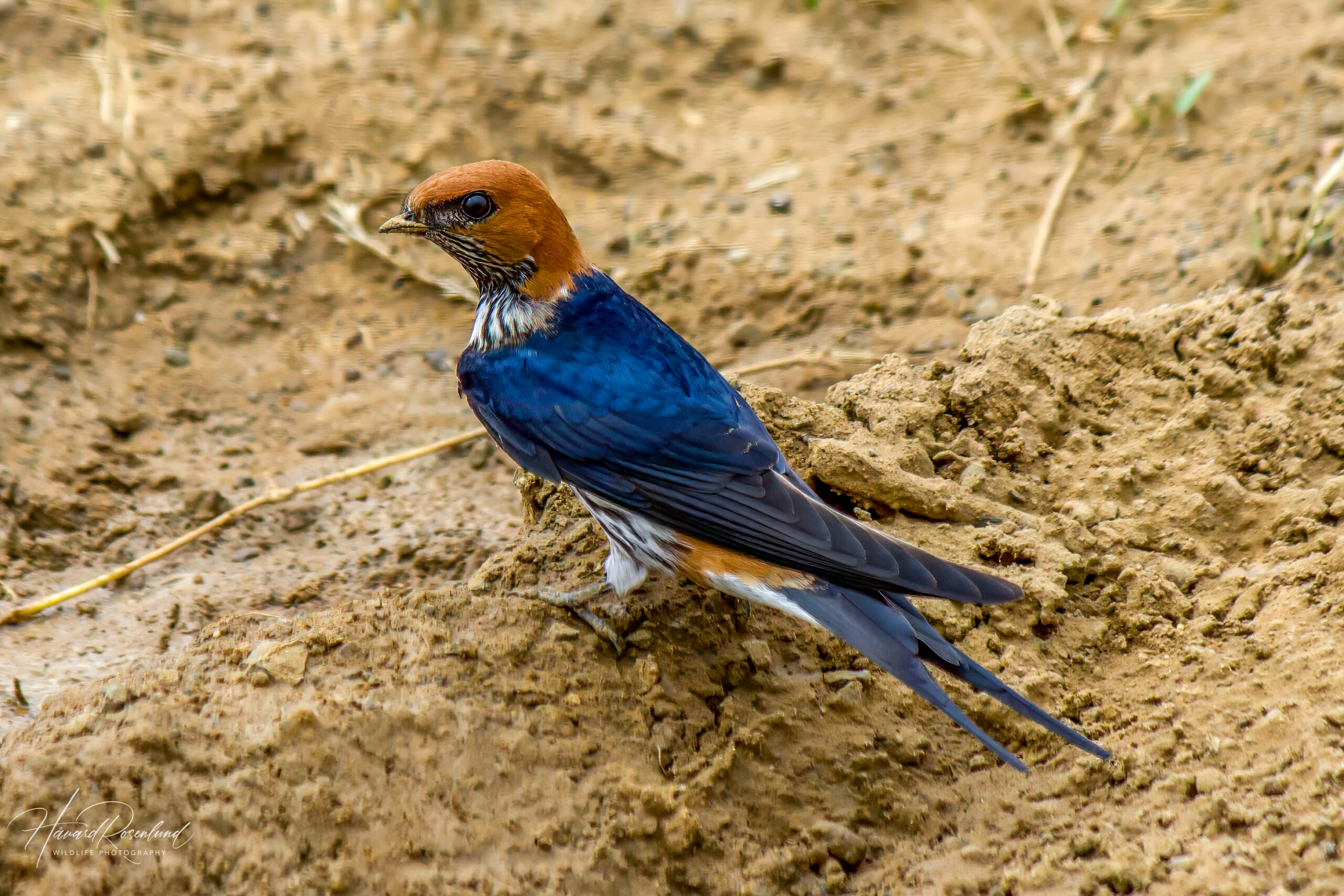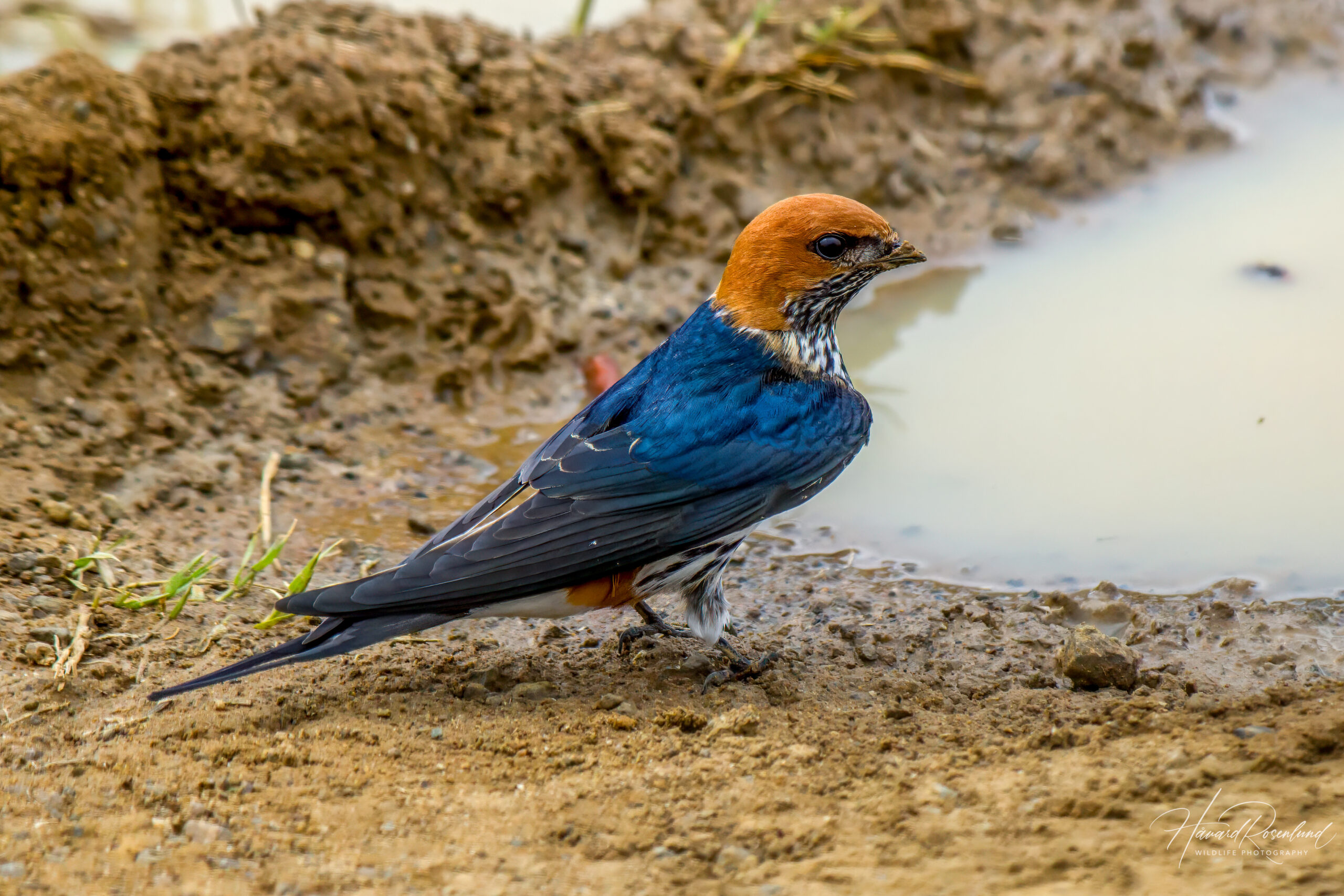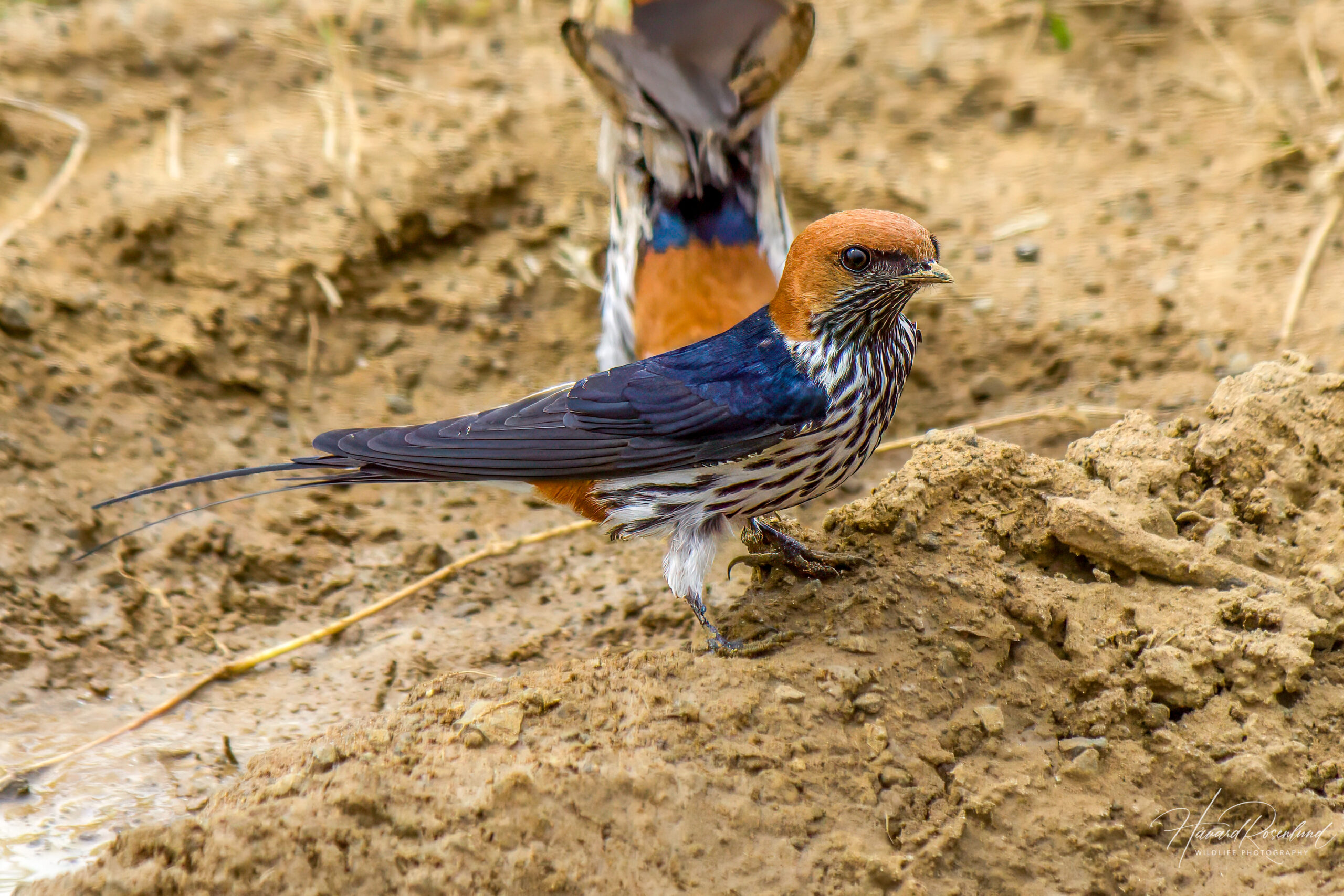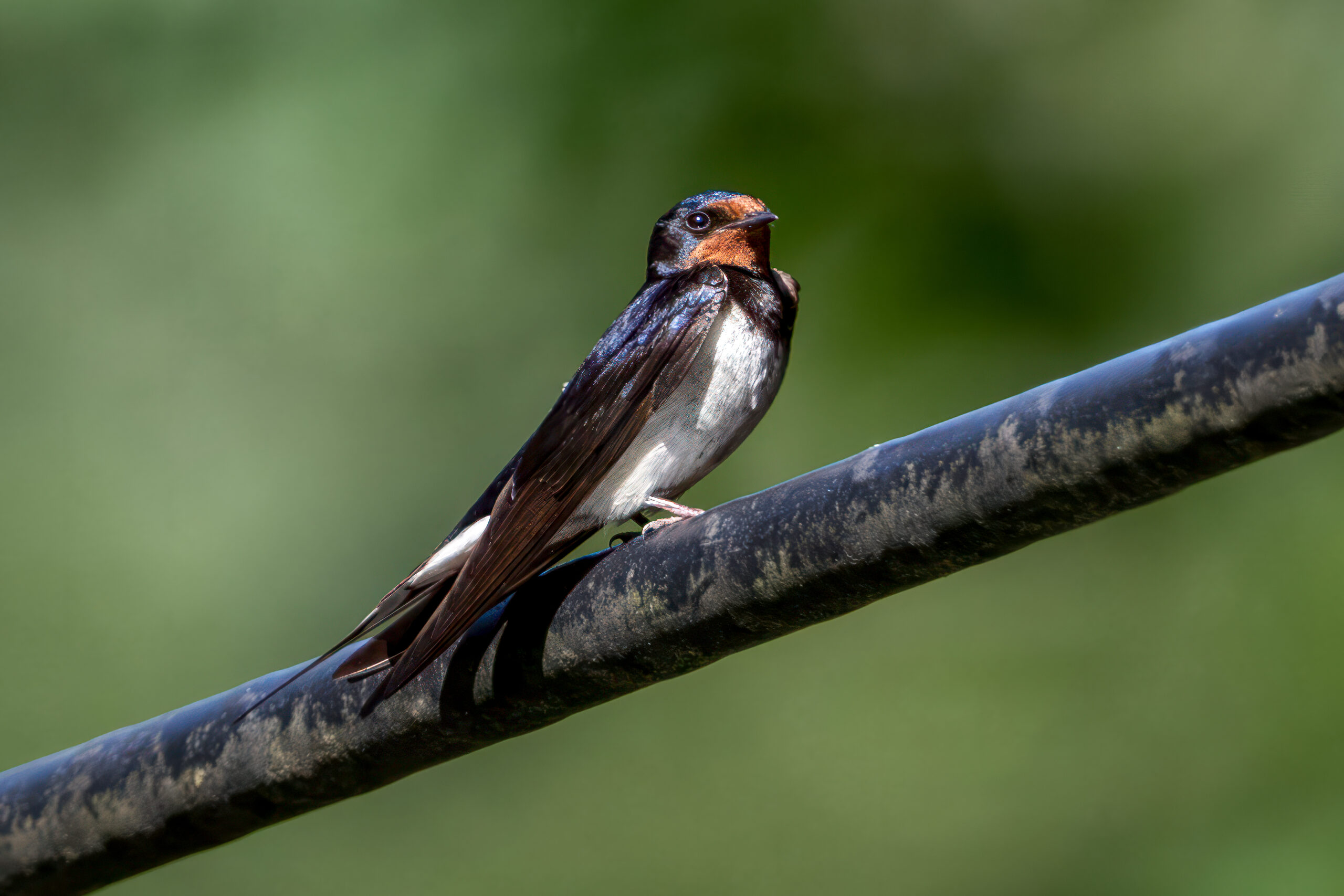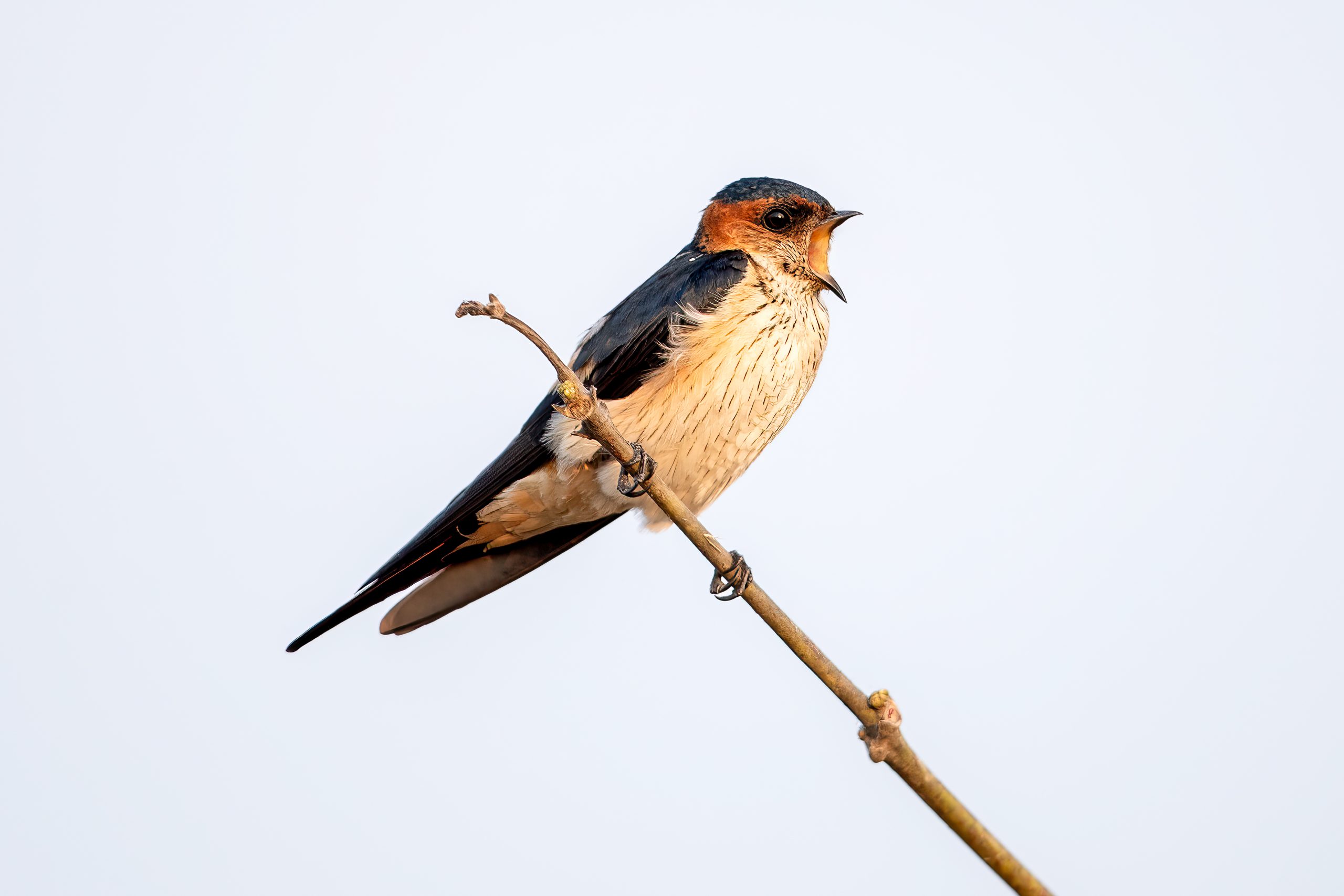Description
The lesser striped swallow (Cecropis abyssinica) is a large species of swallow found in much of sub-Saharan Africa. It grows to a length of 15-19 cm (6-7.5 in). As is common with the swallows in the Cecropis genus, the lesser striped swallow has a striking plumage with a dark blue body, a red head, and a red rump. This species has white underparts, which are heavily striped. It is similar to the greater striped swallow (Cecropis cucullata), which share some of the same range in Southern Africa. The lesser striped swallow has much denser and darker stripes, as well as a more red head, and redder rump. It is also smaller in size than the greater striped swallow.
Diet & habitat
The lesser striped swallow can be found in grasslands and savannas, as well as open forests and woodlands. It is found more in forested areas than the similar greater striped swallow, which also prefers higher altitudes than the lesser striped swallow. Lesser striped swallows typically eat various insects, such as flies, bees, and beetles, which they catch while flying. They do occasionally eat seeds and fruits. They can feed alone, in small groups, and in large groups up to 100 individuals.
Nesting
The lesser striped swallow is migratory in the northwestern parts of its range and in Southern Africa, and is resident all year round in the remainder of its range. Breeding season varies with location, but most often coincides with the rainy season. Both sexes build a nest, which is a bowl with an entrance made of mud, grass and feathers. If is typically placed underneath an overhanging surface above ground. A pair may nest alone, but sometimes multiple pairs nest close to each other, especially underneath bridges. 2-4 eggs are laid and incubated by the female for 14-21 days. Both sexes feed the chicks, which fledge after 17-28 days.
Status
The lesser striped swallow is common and widespread throughout most of its range. The numbers are believed to be increasing, likely because of an increase in available nest sites due to human development. It is set to least concern on the IUCN Red List.




